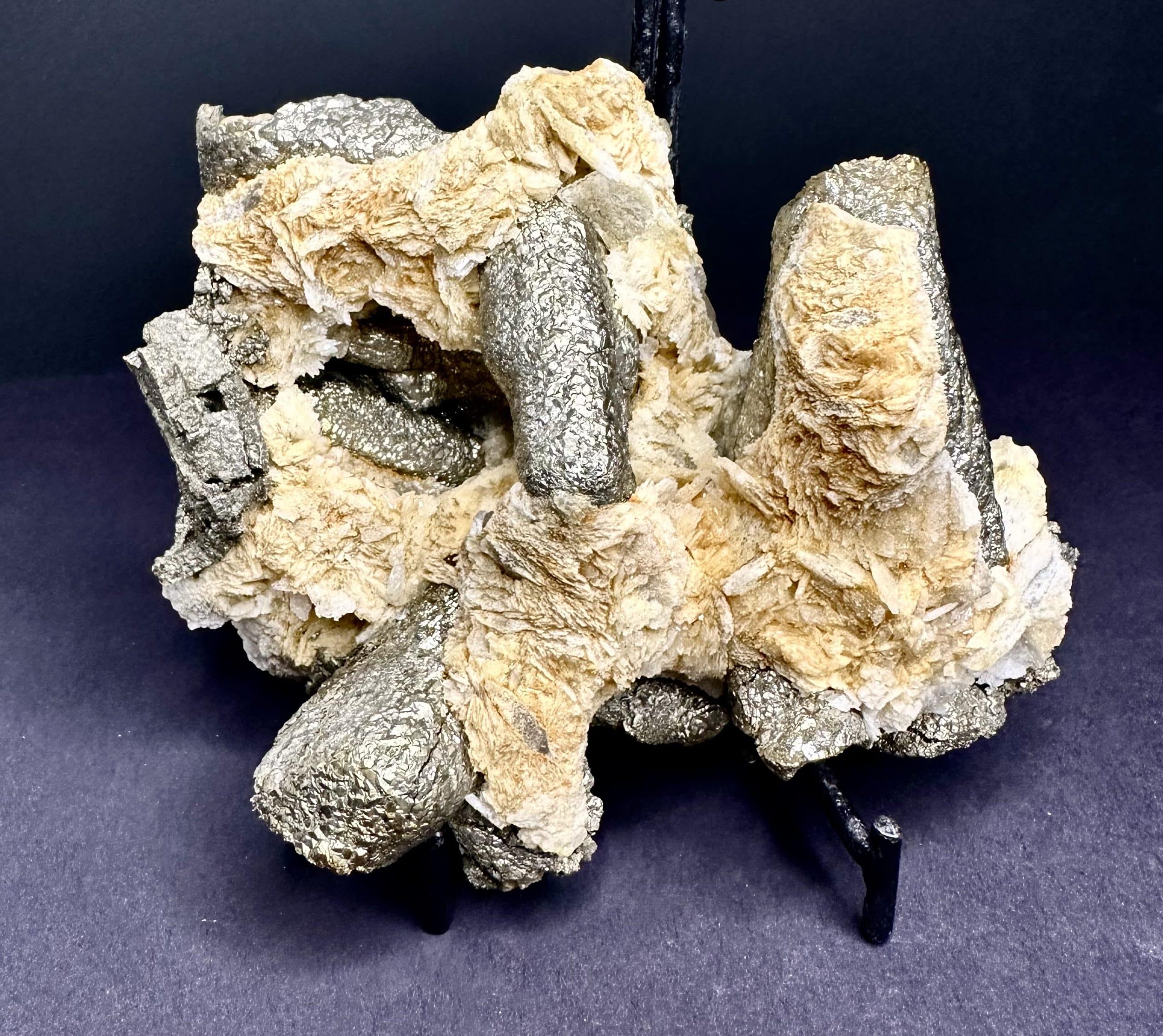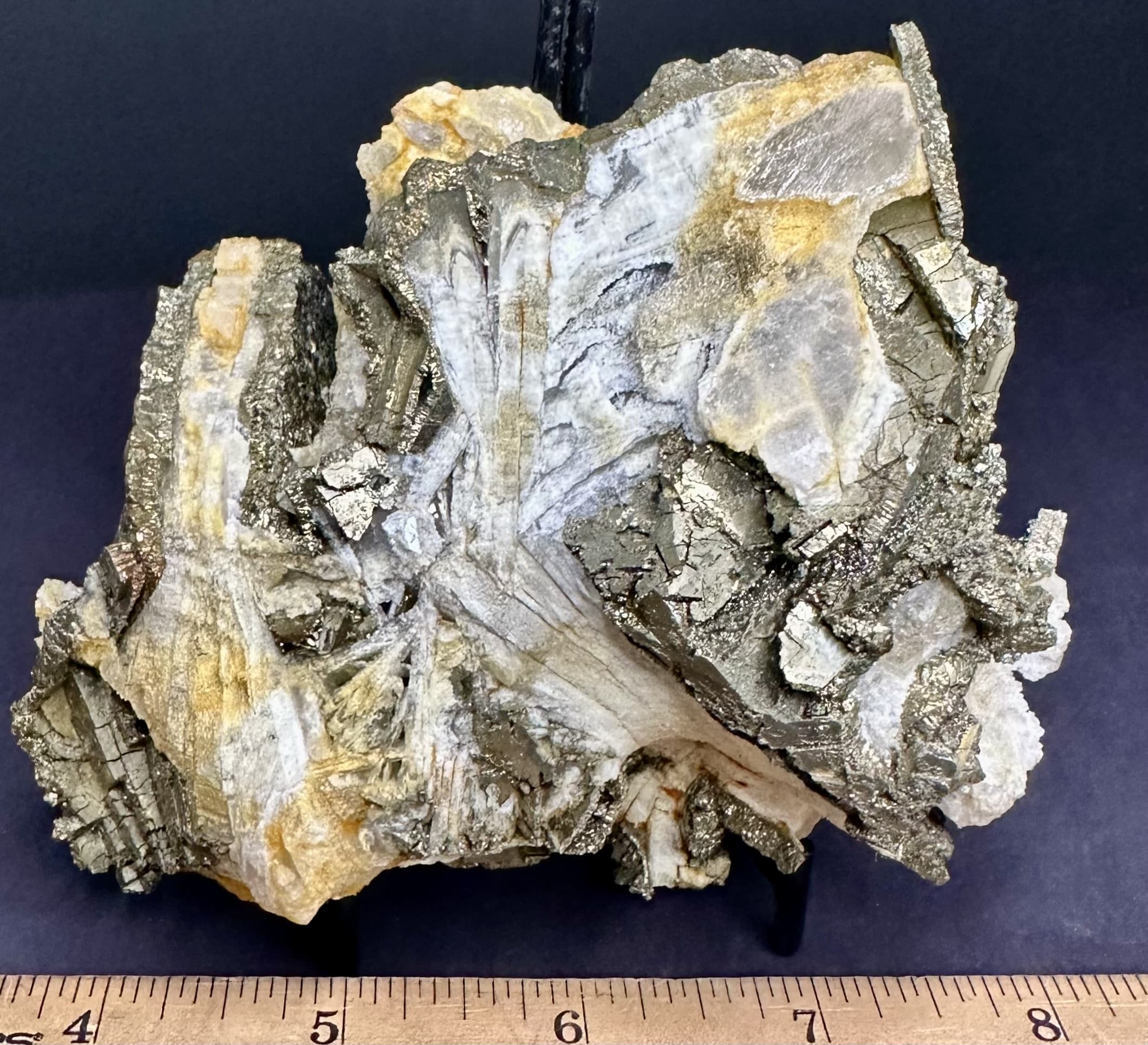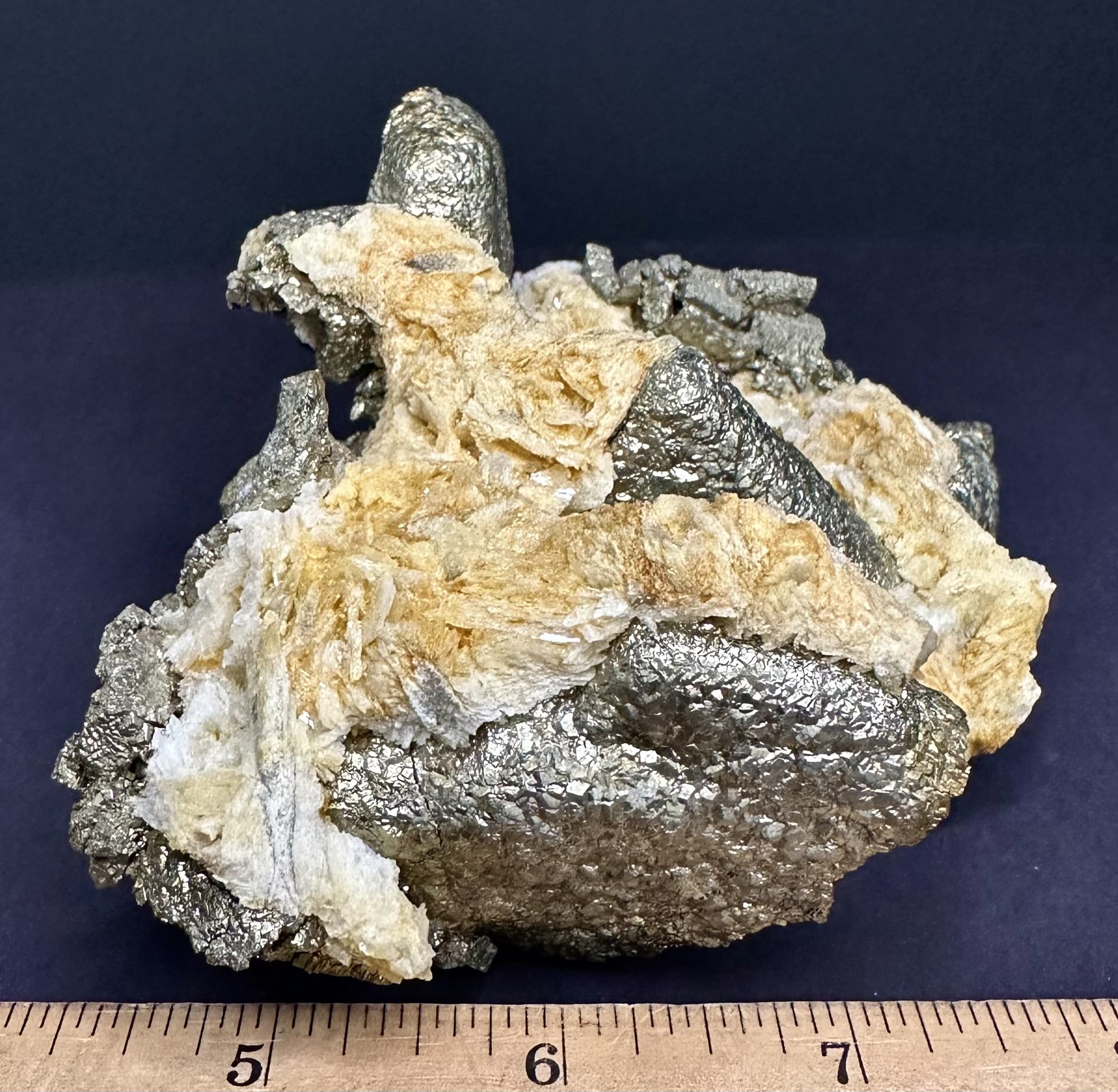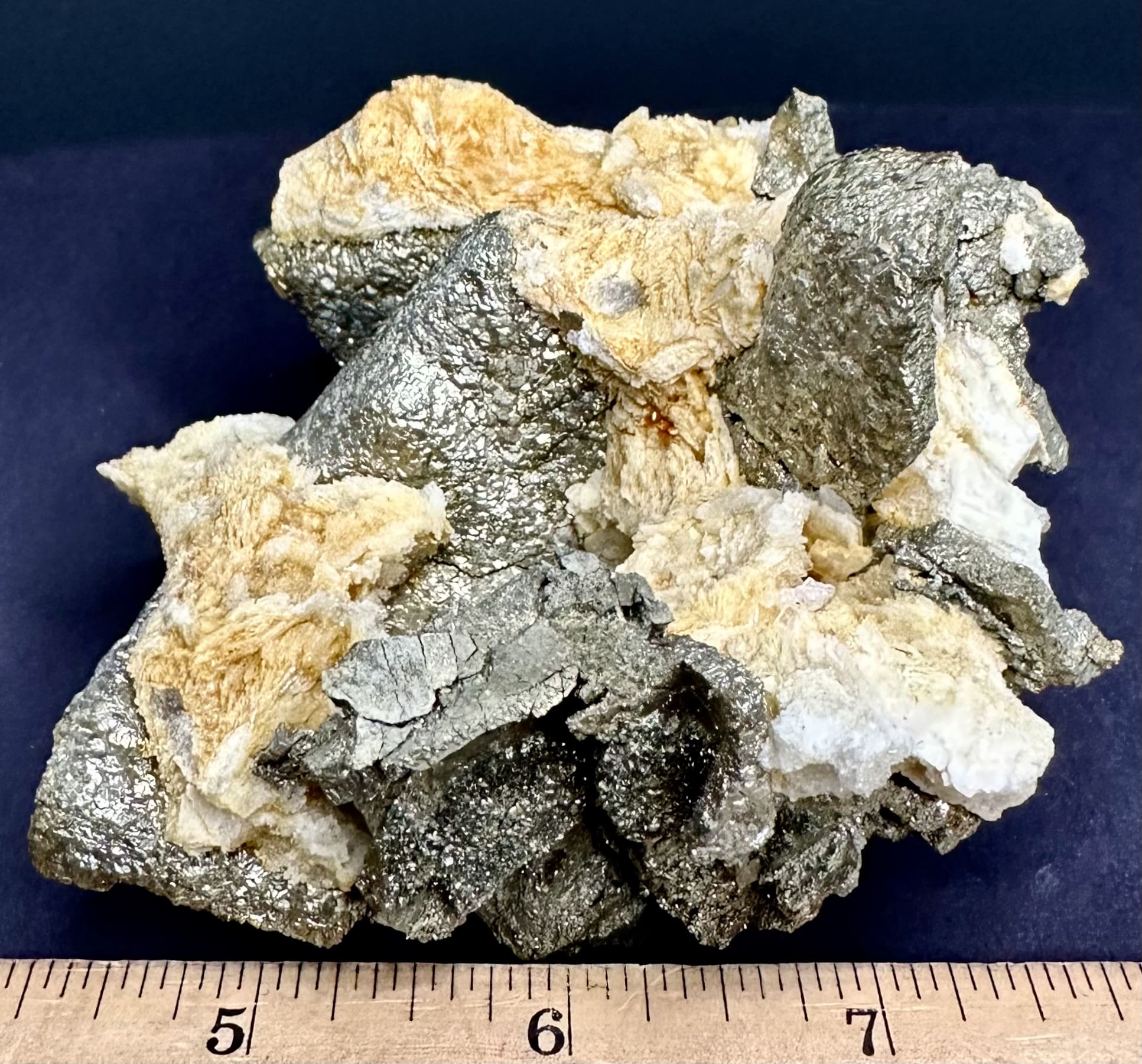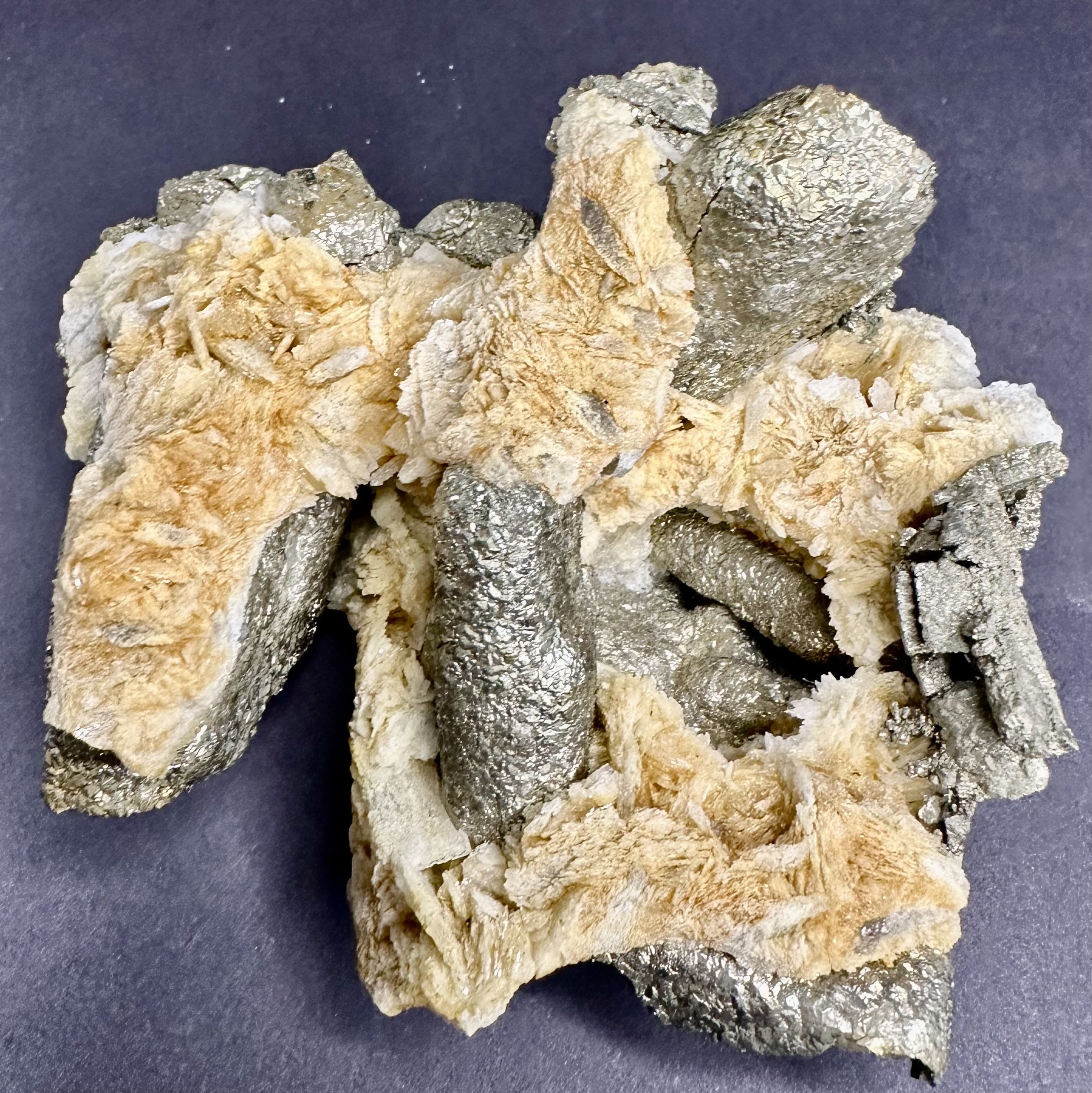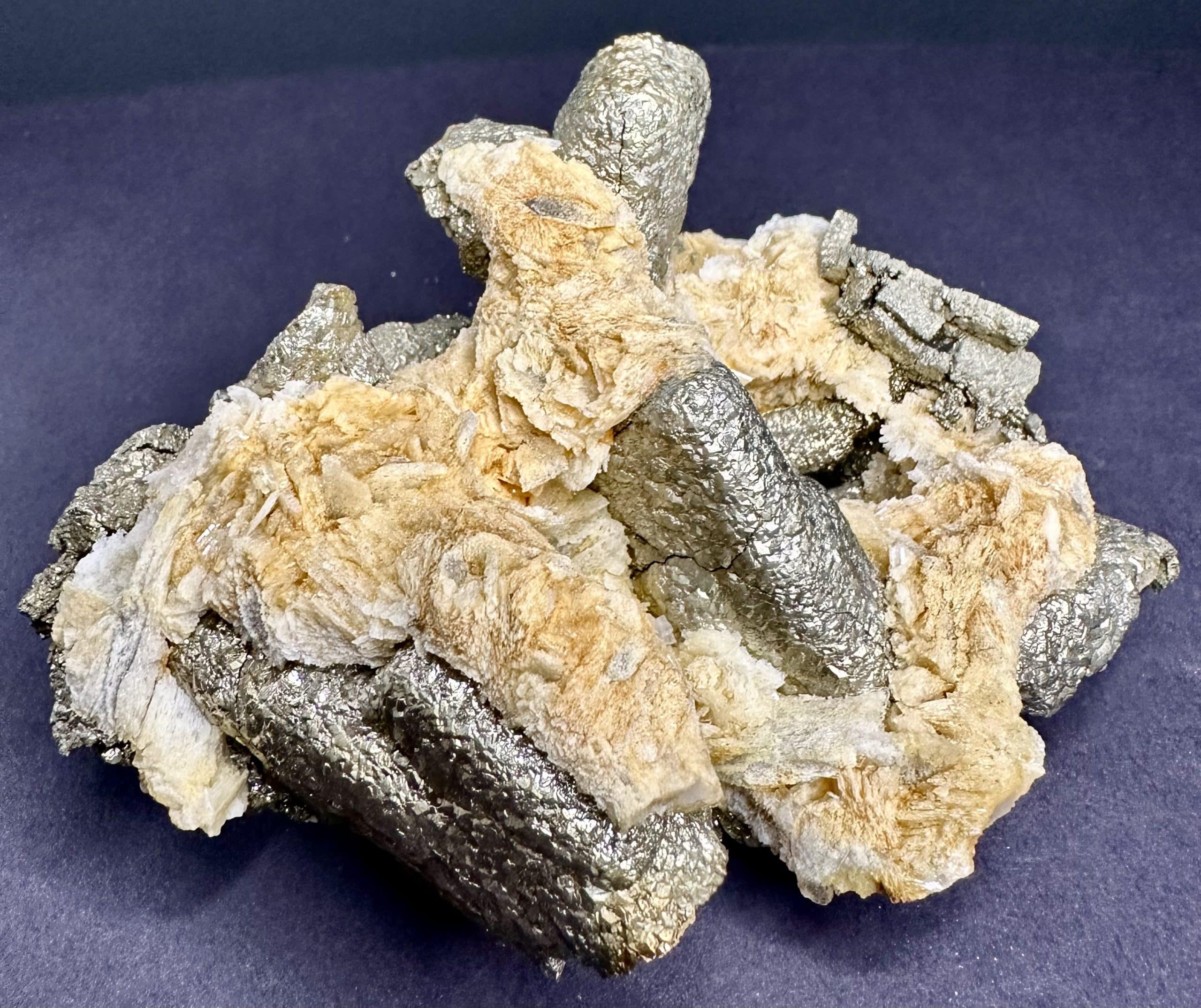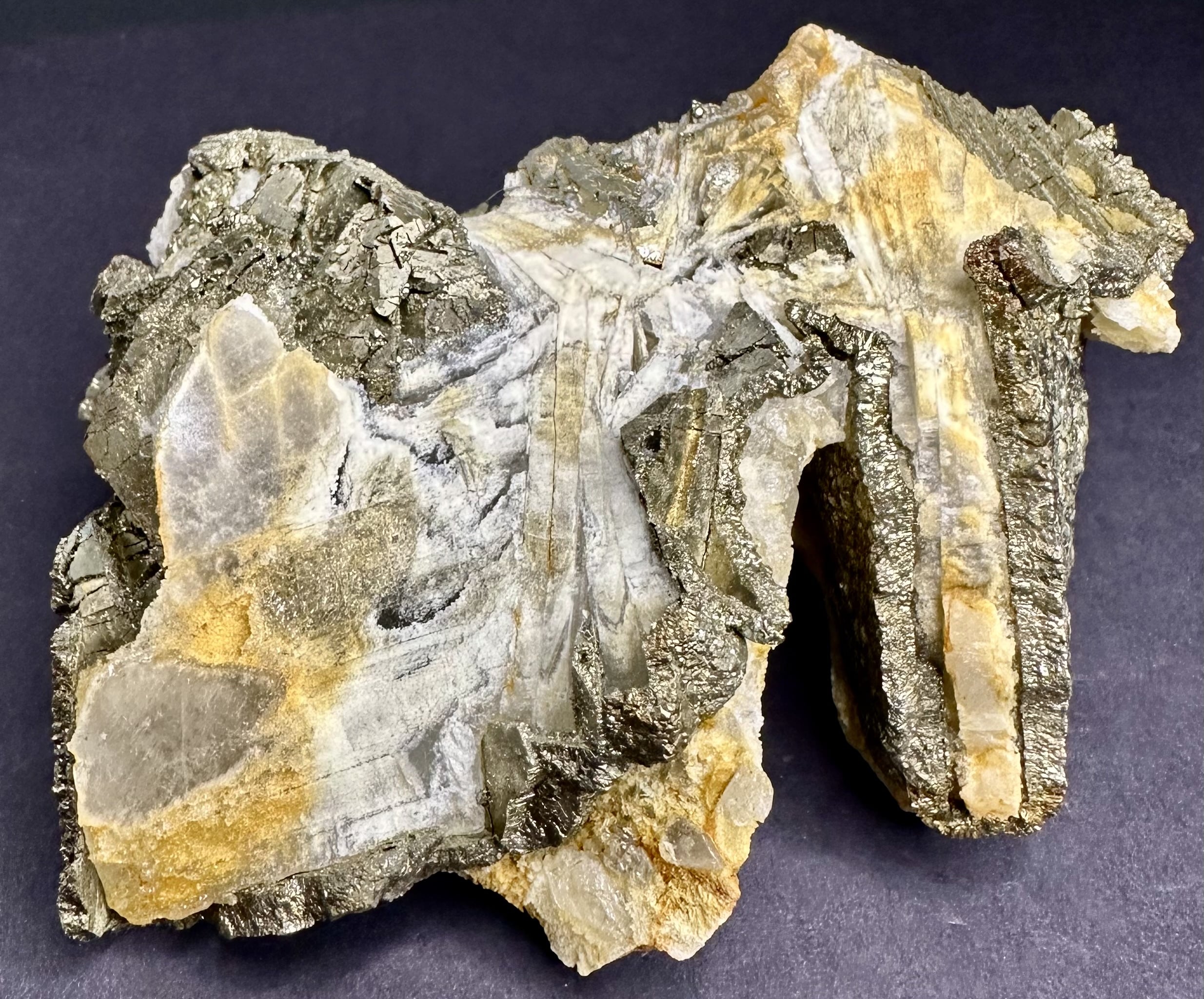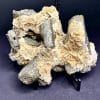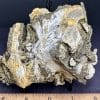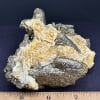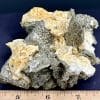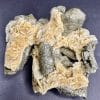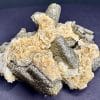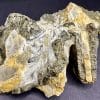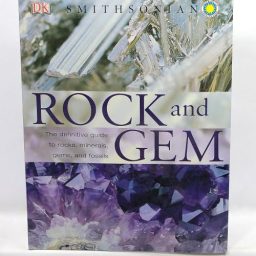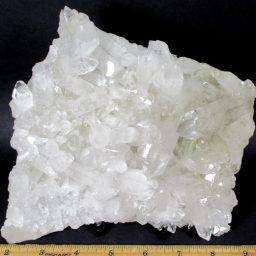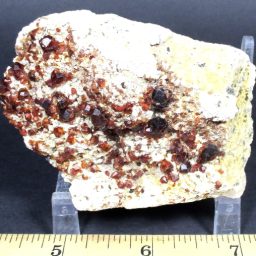Description
Pyrite, or Iron Pyrite, is an Iron sulfide with isometric Crystals that usually appear as cubes. It is brittle and can break or powder easily. Its metallic luster and brass yellow hue have earned it the nickname of “fool’s gold” due to many miners mistaken it for the real thing. Ironically, small quantities of actual gold are sometimes found in Pyrite. It is the most common of the sulfide minerals and is usually found with other sulfides or oxides in Quartz veins, sedimentary or metamorphic rocks.
Barite gets its name from the Greek word baros (heavy) due to its high specific gravity. Barite is mostly mined as an ore for barium. It can form as crystals or as an aggregate. The mineral is most often white or colorless but can form in array of colors. Crystals are transparent to opaque with prismatic, tabular, bladed, or acicular habits. Aggregates can be massive, granular, concretionary, and fibrous. The crystals are soft and brittle and have perfect cleavage in two directions. Specimens should be kept from heat, and they might fade in sunlight. Specimens might fluoresce and some have greenish white phosphoresce. It is used in the manufacture of paints and paper. Although Barite contains a ‘heavy’ metal, Barium, it is not considered to be a toxic chemical because of its extreme insolubility.
